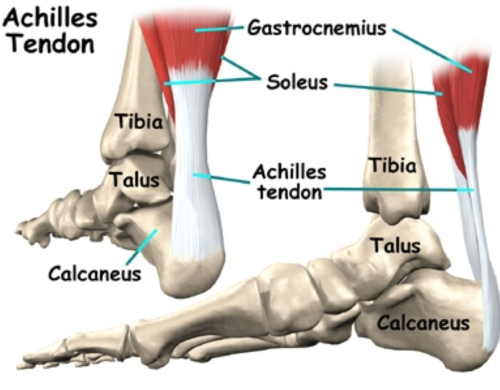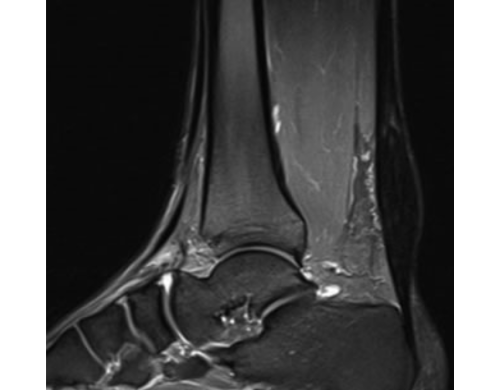Achilles tendon connects the calf muscles (the gastrocnemius and soleus muscles) to the heel bone or calcaneum. It pushed the foot downwards to allow a person to walk or run.

1. Insertional Tendo-Achillis Tendinitis
2. Non-Insertional Tendo-Achillis Tendinitis
This is the pain at the level of insertion of Tendo-Achillis to the heel bone. This causes localised pain which increases with walking.
This increases over the years and most patients notice thickening of tendon usually few centimetres above the heel bone. This is painful to touch and both shoe wear and walking becomes painful.
This often is unilateral and can be bilateral in small proportion of patients.
No definite cause is known. This happens around the area of tendon with reduced blood supply. Repeated microtears from abnormal stresses lead to thickening of the tendon.
Non-operative treatment:
• Physiotherapy
• Extracorporeal shock wave therapy (ESWT)
• Injection of PRP
• High volume injection.
Surgical Treatment:
• Decompression of tendon and fractional lengthening to improve vascularity of the tendon.
This procedure is done under general anaesthesia as a day case procedure. The leg is supported in a weight bearing plaster cast for 6 weeks. Following removal of cast further rehabilitation include referral to physiotherapy to strengthen the tendon.
This is the pain at the level of insertion of Tendo-Achillis to the heel bone. Thickening of the tendon or bony spurs could be felt around this area.
Why does this happen
Most people with this condition have tightness of Tendo-Achillis. which causes thickening of the tendon.
Achilles tendinopathy (insertional)
When pain, weakness and loss of function is associated with a swelling down at the bottom of the tendon by the heel bone, it is referred to as insertional Achilles tendinopathy. This is because the tendon “inserts” onto the heel bone. Sometimes the heel bone can be quite prominent here and very painful. This can be because of a combination of problems here including:
• Achilles tendon degeneration
• Bone spurs at the tendon insertion
• Inflammation of a small bursa (fluid filled sac behind tendon) – bursitis

The clinical features usually diagnose the problem. An X-Ray can be done to look for tissue swelling or bone spurs. A more helpful test is an ultrasound which can easily be done to look at the tendon quality or an MRI.

People often “live” with the symptoms for quite a while, or alter their activity profile. The symptoms can unfortunately progress with a potential even for rupture of the tendon. It is advisable getting assessed by a foot and ankle surgeon or physiotherapist when possible.
How do you treat Achilles tendinopathy?
Both insertional and non-insertional tendinopathy can be treated in a similar fashion.
The treatment is operative or non-operative.
The vast majority of patients require no surgery. Activity modification and rest coupled with suitable anti-inflammatories or pain-killers can really make a difference. Early rest in a boot may be needed in the short-term. A small heel raise (silicone insert) can help in the shoe. It is important to get introduced to a correct physiotherapy regime as they can prove hugely successful IF FOLLOWED AS INSTRUCTED. If physiotherapy is not fully successful then shock wave therapy can be used which has good results.
Operative treatment can be performed if other measures fail. Surgery usually involves exploration of the painful tendon area and removal of the degenerate/inflamed tissue or painful bony bumps on the heel. If the tendon is detached from the bone during surgery or a large amount of the tendon is removed then using another tendon in the foot to support the damaged Achilles tendon may be needed. This is not usually needed.
1. Alfredson H, Pietila T, Jonsson P, Lorentzon R. Heavy-load eccentric calf muscle training for the treatment of chronic Achilles tendinosis. Am J Sports Med. 1998;26(3):360-6.